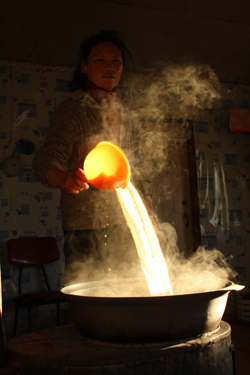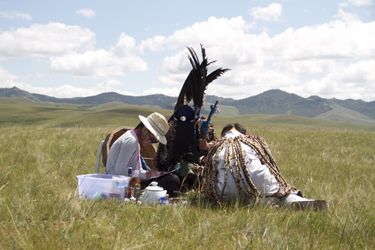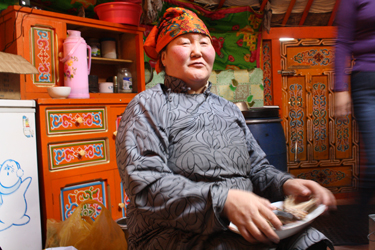Fieldwork in Mongolia
Angry mountains and ailing bodies: shamanism in Mongolia’s ‘age of the market’


 After over a year of fieldwork with Mongolian shamans, I have been exploring the relationship between the country’s massive mining boom and the resurgence of shamanism.
After over a year of fieldwork with Mongolian shamans, I have been exploring the relationship between the country’s massive mining boom and the resurgence of shamanism.
Mongolia’s economy is projected to grow faster than any other in the next decade,[1] as an estimated US$1 trillion worth of untapped precious metals and minerals lay underground.[2] As approximately 60% of Ulaanbaatar residents live in peri-urban slums, who will benefit from this influx of wealth? [3] A shaman living there said to me:
‘In our country today, people are working hard but earning little and spending too much. They are getting sick, have bad luck and lose their things…Spirit owners of mountains and rivers are angry right now. Part of Mongolia has been sold to foreigners. They are taking our resources. This is why the spirit owners are angry.’
Yet in what might be read as resistance to mining, ambivalences abound: this shaman’s daughter is studying to become a mining engineer.
In light of the apparent link between mining and spiritual illness, my research aims to connect the human body, the body of the economy, the body of the earth and the body of their medium – the story, i.e. the stories people tell that make these connections.
Picture captions from top right:
A woman stirred the morning salty-milk tea (suu te stay) at her log cabin home in Khatgal, a village on the Southern tip of Lake Khovskol in Northern Mongolia.
In the countryside not far from Ulaanbaatar, an initiate received the name of his ancestor spirit from his teacher Nayamsambuu’s ancestor spirit. The morning had witnessed aspersions of milk and vodka “just like the ocean” to tengger (sky and god). Veteran shamans had fed milk, incense, sweet cheese curd and vodka to awaken the red string encircling the camp – as they had the shaman’s drum, mirrors, and copious plush snakes that hung from his cloak. After learning their ancestor spirit’s name, the initiate, aided by surrounding family members and shamans, called to him for the first time. After several hours of trial they finally achieved success. Nyamsambuu has many such students, who learn the beginning steps of shamanship from him. As they build relationships with their respective ancestor spirits, students gain individuality and independence, although forever linked by their teacher’s otog (fire or family).
A Darhad shaman cleaned the sheep shoulder bone in preparation for a scapulimancy divination. Many had gathered in her ger (tent home) on the outskirts of Ulaanbaatar for Tsaagan Sar (Mongolian new year) celebration and ritual. After the bone was cleaned and meat distributed, the shaman poured salty-milk tea and sprinkled arts (juniper incense) on the bone before placing it in the fire. Several minutes later she removed it and after it had cooled, she read the fissures, cracks, and black and white patterns on the bone for insight into the querent’s life.
[1] The Economist, (2012).
[2] The lion’s share of wealth resides in the Gobi desert, extracted by Oyu Tolgoi and Tavan Tolgoi mines. Oyu Tolgoi, 66% foreign-owned, plans to begin operations unearthing copper in 2013 (Turquoise Hill Resources, 2012). State-owned Tavan Tolgoi is the world’s largest untapped coking and thermal coal deposits with a total estimated resource of 6.4 billion tons – enough coal to fuel China’s huge demand for the next 50 years (Levin, 2012).
[3] Kamata et. al., 2010.
